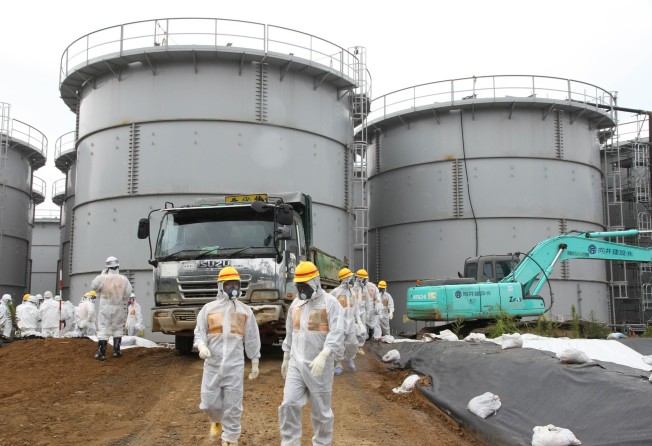
Stop sending ‘confusing messages’ on Fukushima, IAEA tells Japan
IAEA urges Japan's atomic regulator to explain to public more clearly about latest leak of radioactive water at tsunami-damaged energy plant

The world's nuclear watchdog has urged Japan to explain more clearly what is happening at Fukushima and avoid sending "confusing messages", the country's atomic regulator revealed.

Local regulators yesterday rubber-stamped their earlier assessment of the huge spill, in which one of around 1,000 tanks at the site was found to be holed, as being INES level three on an eight-point scale. It had raised it on Monday from level one.
That made it the single most serious incident since three reactors went into meltdown after being swamped by the earthquake-sparked tsunami.
The initial disaster, which spewed radiation over the countryside and sent tens of thousands of people fleeing, was rated level seven, the same as the 1986 Chernobyl disaster. Last week's spill was "the most recent of a number of events that involved leakage of contaminated water", the IAEA said in a paper to Japan's Nuclear Regulatory Authority.
"Previous similar events were not rated on the INES scale. The Japanese authorities may wish to prepare an explanation for the media and the public on why they want to rate this event, while previous similar events have not been rated."
Fukushima operator Tokyo Electric Power (Tepco) is struggling to deal with the vast - and growing - volume of water it has used to cool the broken reactors.
It said last week that some of the 300 tonnes that leaked from the tank could have made its way through drainage systems into the Pacific Ocean.
That came on top of the admission that groundwater contaminated by water from the plant was flowing into the sea at a rate of 300 tonnes a day, taking its low-level radioactive load with it.
The IAEA cautioned against the frequent use of INES ratings, saying this risked clouding the issue in the public mind.
"One possible communication strategy, rather than using INES as a communication tool to rate each event in a series of similar events, would be to elaborate an appropriate communication plan to explain the safety significance of these types of event," it said. "This would avoid sending confusing messages to the media and the public on a possibly long series of INES-rated events at the lower levels of the scale, for the duration of the entire recovery operation", which is expected to take up to 40 years.
The chairman of Japan's nuclear watchdog said yesterday his committee approved the designation of level three, but things were still unclear. "We don't know what exactly the situation is, how much has leaked, how radioactive it was, or where it was going," Shunichi Tanaka said.
But he also accused the international press of not fully grasping the INES designations. "Some foreign news media have reported the situation is serious just because it is scaled at level three."